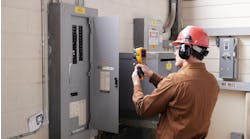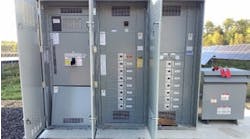Robotic equipment has helped many industries become more efficient and safe. The equipment could be picking material, welding, or wrapping a pallet of product. However, this equipment is very sensitive to power quality anomalies, specifically shallow voltage sags.
Voltage sags have been discussed at great length in previous PQ Newsbeat articles, primarily since it constitutes 80% of equipment misoperations nationwide. The primary issue that surfaces during a voltage sag is the robots loss of location in the XYZ coordinates. When the location is lost, the robot needs to be reset, which results in loss of production and increasing maintenance costs.
A supply chain company that deals primarily with food storage and delivery to restaurants built a new facility that included a robot. The robot was used in the subzero freezer section of the warehouse to eliminate a safety issue with employees working in a very cold environment. The robot drives the aisle of the pallet racks, picks the food, and delivers it to the 32° freezer area for shipping. When a shallow voltage sag would occur, the robot would lose its location and require a reset. Many times maintenance personnel would have to enter the subzero freezer to restore operation.
To mitigate the problem, a dynamic sag corrector (DySC) was selected to protect the entire robot. The DySC was installed between the robot's main circuit breaker and the control cabinet. Installation was simple and straight forward, mounted on the same wall, requiring the rerouting of only two conduits. Installing the DySC this way allowed for the controller and robot to be completely protected without voiding any warranties.
Within four months from commissioning, nine voltage sags occurred, the longest lasting 100 cycles with voltage dropping to 51% of nominal. When the plant manager was asked about the robot operation, he said he didn’t even think about it since there were no misoperations. This was a successful implementation of a power quality mitigation technology.



